TYING REAL LIFE ADVENTURES CLASSROOM LEARNING
District fourth-graders, like Emma Grunenberg’s IS fourth-graders, are beginning their new CKLA unit about geology.
To introduce her students to this topic. Ms. Grunenberg shared photos of her recent trip to Iceland, where she had a chance to visit an Icelandic tectonic plate called “Bridge Between Continents.” This bridge connects the North American plate and the Eurasian Plate! Not too many people get to visit and stand in the middle of a tectonic plate’s cracks, but Ms. Grunenberg did!
After looking at the photos, students began their first read of chapter one using the CLOZE reading strategy.
•The Bridge between Continents (or Miðlína) is a 50-foot footbridge in the Reykjanes Peninsula spanning a gaping rift between the Eurasian and North American tectonic plates. It allows people to walk from North American to Europe in a matter of seconds! The lava-scarred Reykjanes Peninsula lies directly on the Mid Atlantic Ridge. These major tectonic plates drift apart by the Earth’s forces, a few centimeters each year.
•Tectonic plates are large, solid slabs of rock that make up the Earth's crust and move slowly on top of the mantle. The movement of these plates causes earthquakes, volcanic eruptions and the formation of mountains.
•CLOZE reading is a teaching strategy that involves removing words from a passage and having students fill them in using context clues. It's used to help students learn vocabulary, grammar, and reading comprehension.
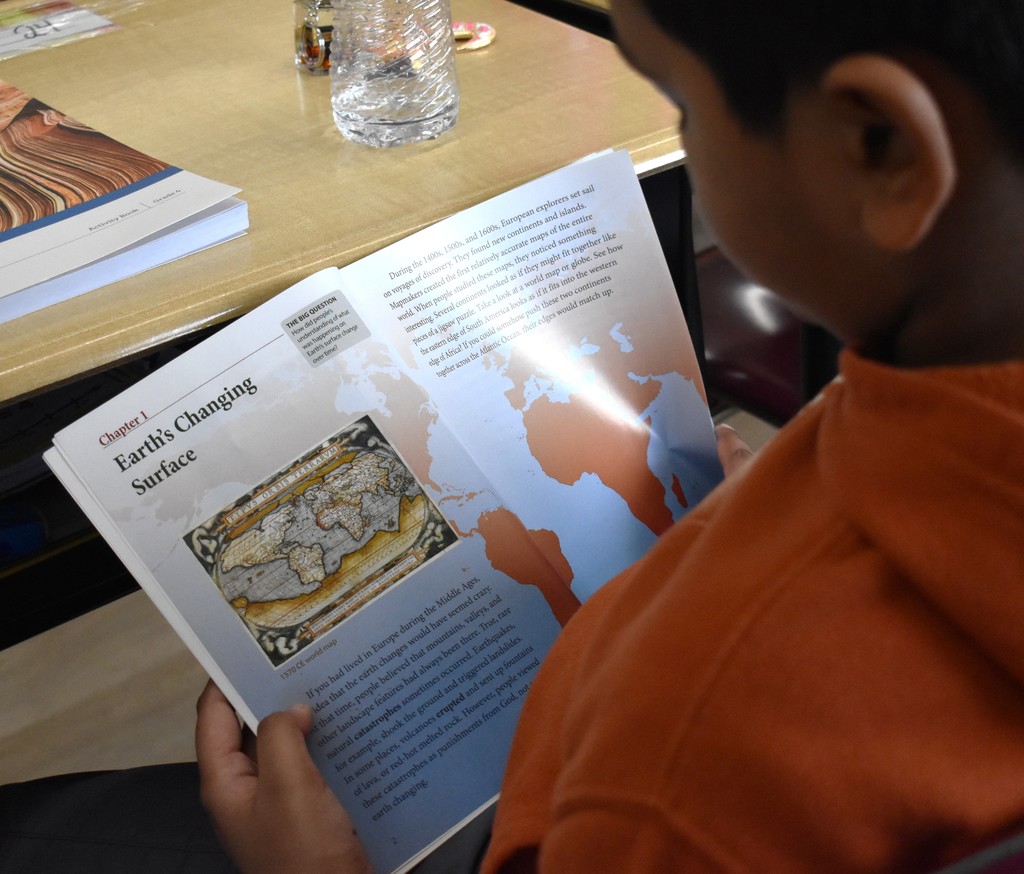
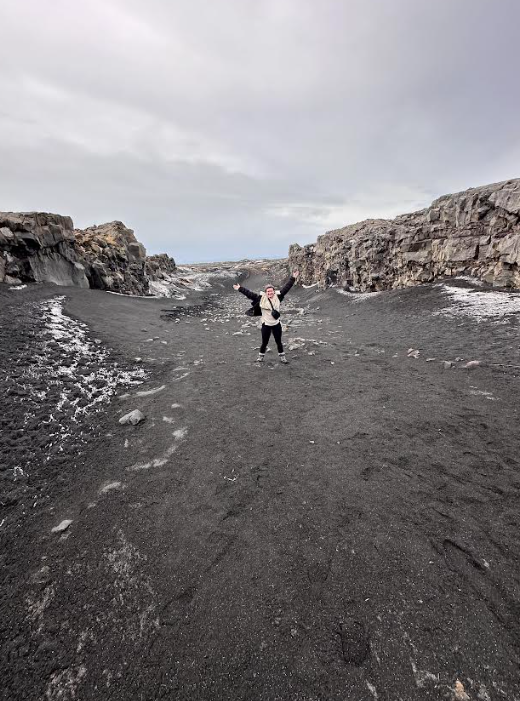



Andrew Hulle’s fifth-grade clarinet students are learning how to expand the range of pitches that they can play on the clarinet. This work is all part of expanding their music and instrument knowledge during lesson and home practice, as each member of the fifth-grade band becomes more knowledgeable and talented when playing their instrument of choice.
For the Winter Concert, students used only six pitches with their left hands. For the upcoming Spring Concert, these clarinetists will add the use of their right hands, which allows them an additional six pitches. During this recent lesson, students were learning where those pitches are located on the staff and which fingers to press down to play them.
As part of their work, they’re using their knowledge to play Victor Lopez’s “Huracan,” which translates to “hurricane” in English. The piece demonstrates the sounds and feelings of this weather event by utilizing a minor key and the musical range of an entire octave. (Breaking news: This piece will be the first musical work to be played at the Intermediate School Spring Band Concert!)
•The word "clarinet" comes from the Italian word clarino, which means "trumpet".
•The clarinet is a relatively new instrument, invented in the 17th century by Johann Christoph Denner.
•The clarinet has inspired many composers, including Mozart, who wrote several pieces featuring the clarinet.
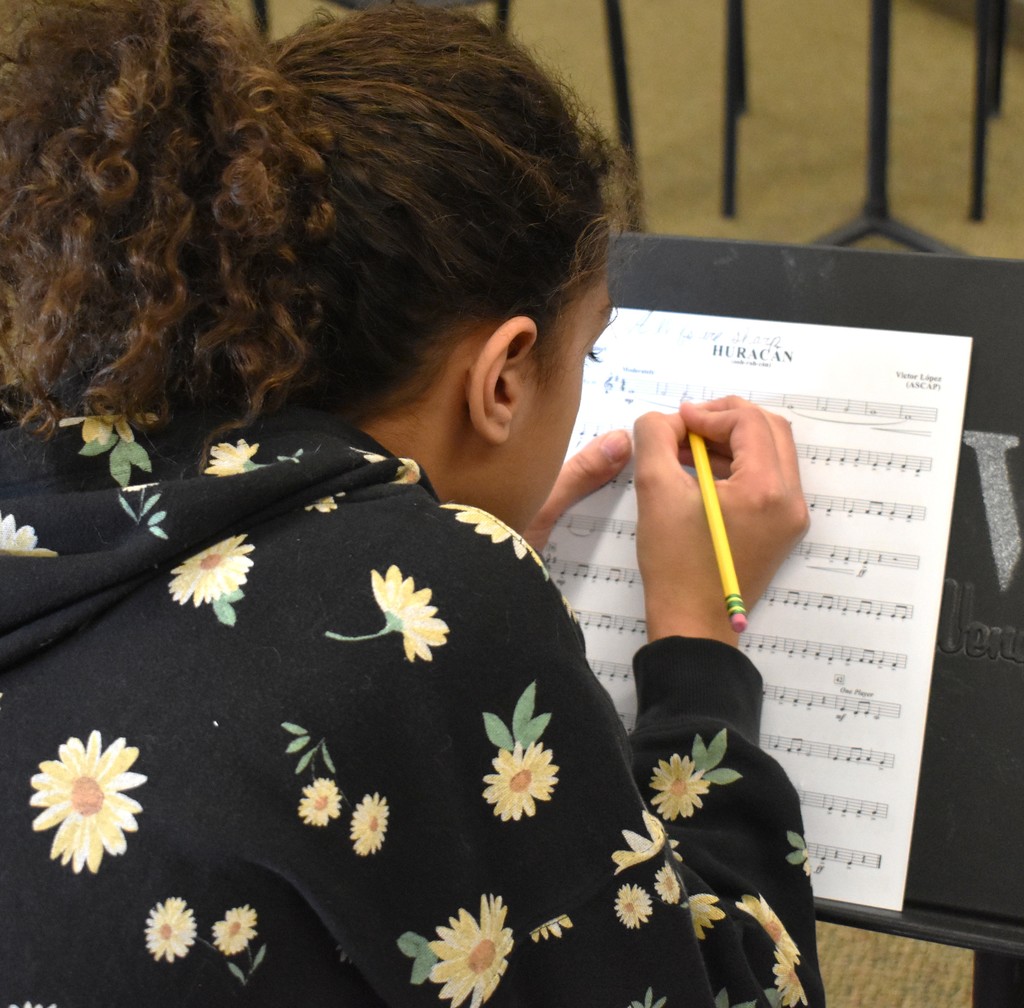
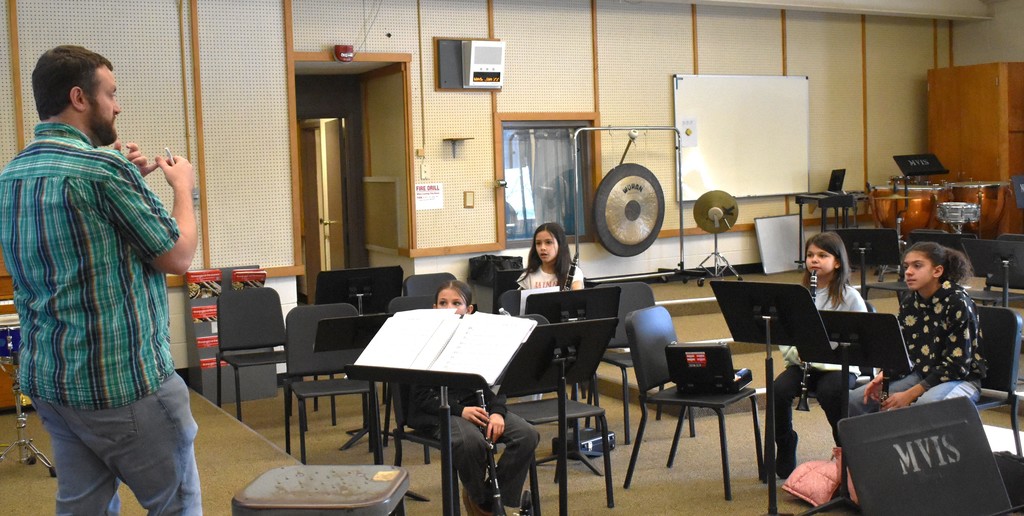
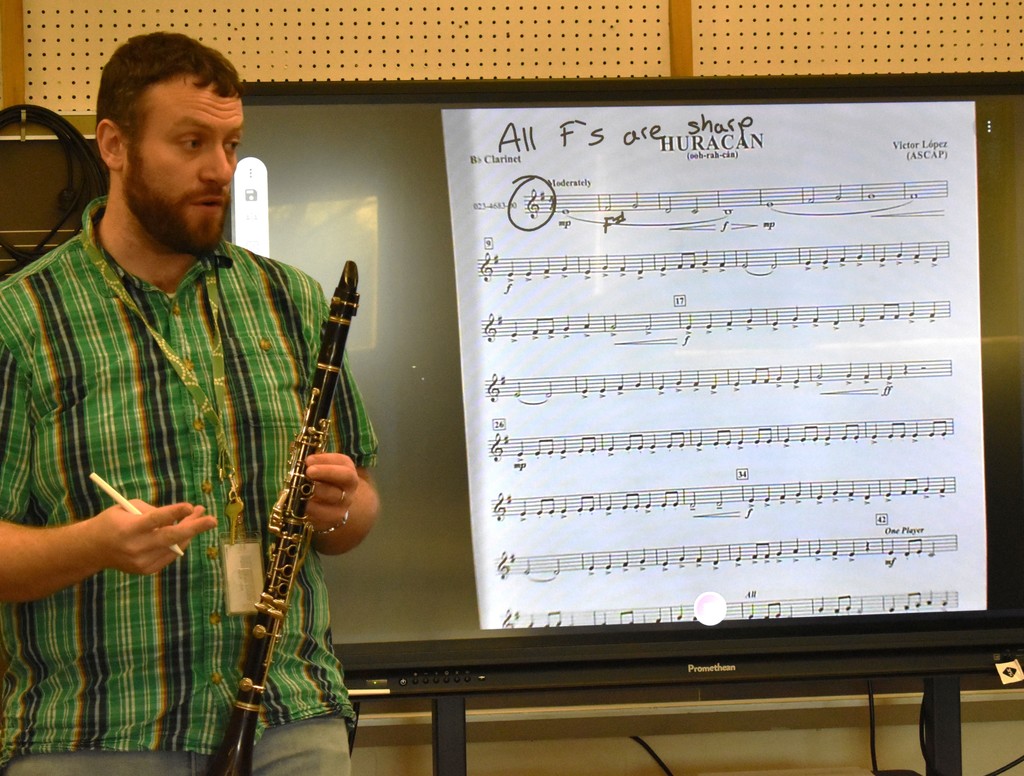
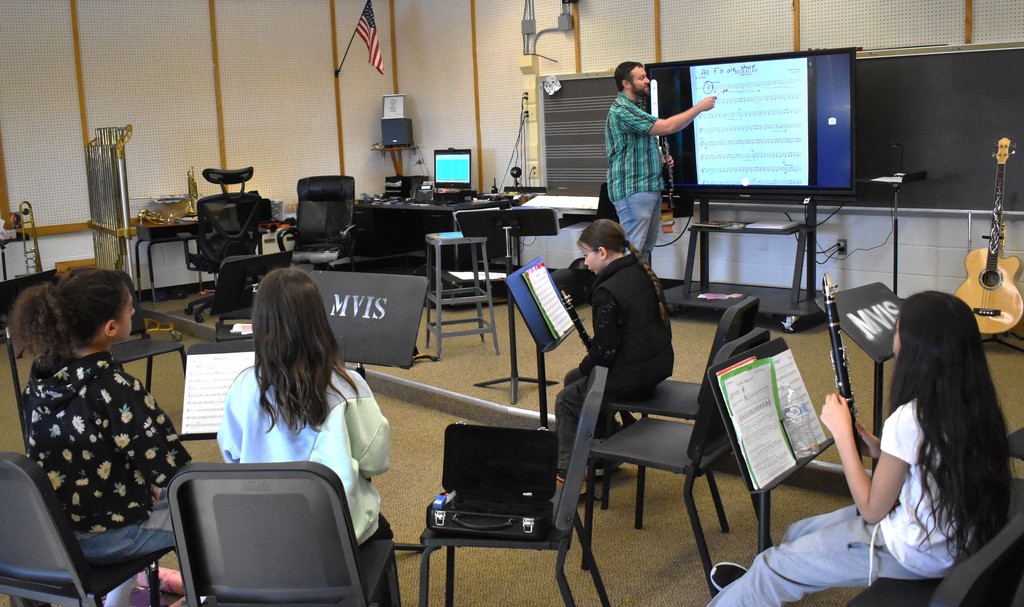
All district third-graders have been recently working on their Reading Unit 5 in Core Knowledge Language Arts (CKLA) Amplify program, which focused on “Light and Sound.” Students learned that sound is energy that travels in waves by using vibrations. They discussed pitch, volume, waves, energy, vibrations and orchestra. Students focused on reading informational text, taking notes, and comparing and contrasting the two forms of energy.
At the Intermediate School third-graders visited Music Teacher/Band Director Andrew Hulle’s music room for a special lesson reinforcing the material in the books!
With the help of some of his Fifth-Grade Band tuba students, Mr. Hulle demonstrated how pitch, volume, sound waves and vibrations work when students play a variety of musical instruments and why that’s important in music. What a great collaborative effort between the Third-Grade faculty and Mr. Hulle!

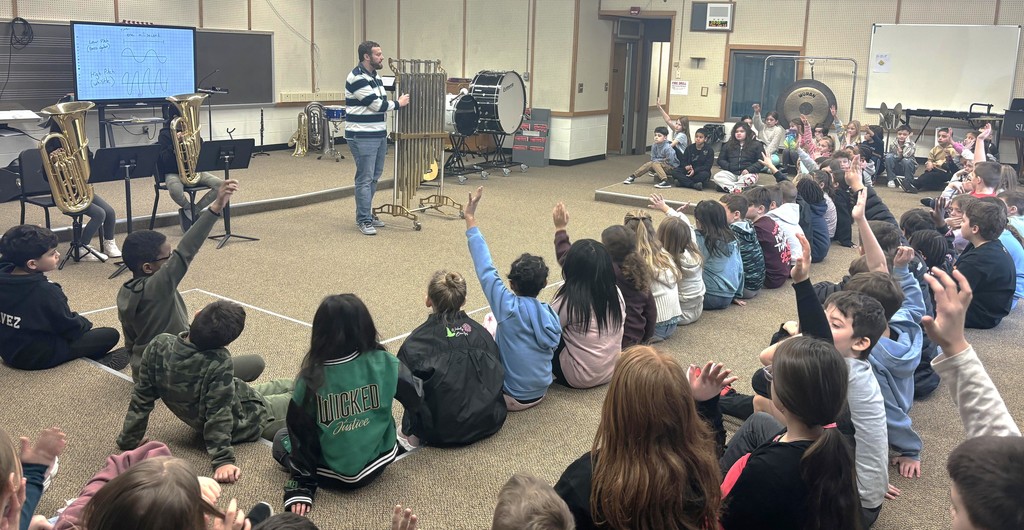
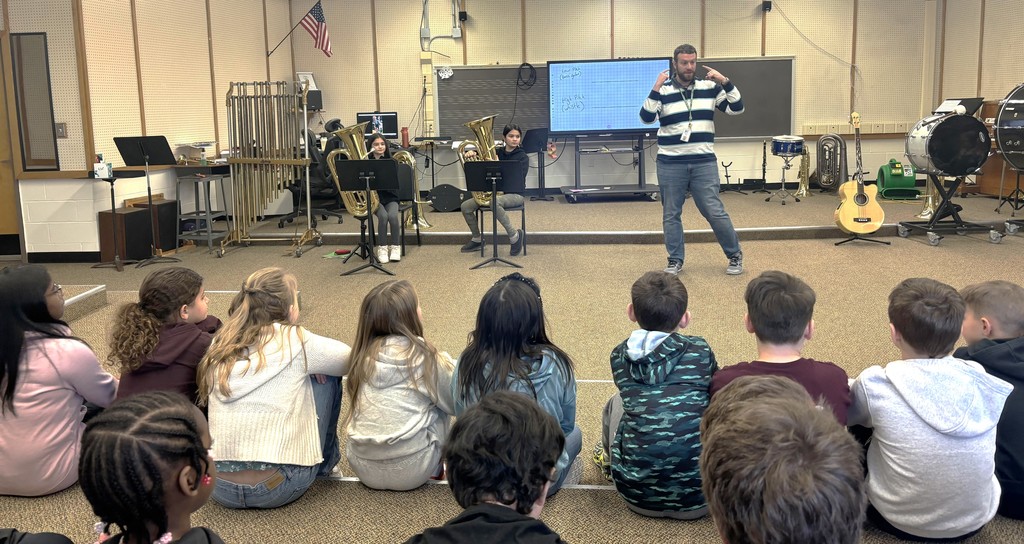
IS students who attend Joan Giardina’s “extra art” class created a beautiful mural which is now on display near the IS Main Office. The school’s motto is “Be Kind,” and they used that as the mural’s theme with heart art to represent kindness!

Elizabeth Sirico’s and Susan Green’s IS fourth-graders recently presented their Longhouse and Wigwam projects to peers in other fourth-grade classes. After spending weeks learning about Native American cultures, students used the information they learned from class to create their own models of Longhouses and Wigwams. What a great way to share what they learned and showcase their hard work!
A Native American longhouse is a traditional dwelling structure built by many Northeast Indigenous peoples, particularly the Iroquois Nation, which was a long, rectangular building made from a wooden frame covered with bark. It was designed to house multiple families from the same clan, often with a central fire pit for warmth and served as a large communal home for extended family units.
A Native American wigwam is a dome-shaped, semi-permanent dwelling traditionally used by certain Indigenous peoples in North America, primarily the Algonquian tribes, which was constructed with a framework of arched poles covered with bark, mats, or hides, often sourced from birch trees. It’s a type of hut with a rounded roof used for shelter and community gatherings.


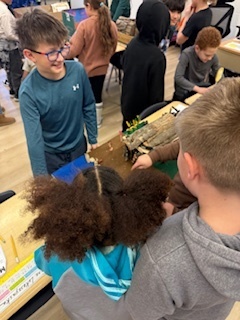

How does weathering and erosion affect rocks? This question was recently investigated by Kim Marasco’s IS fourth-graders!
Students knew that jagged rocks on the top of the mountains roll down. Erosion happens when rocks knock into each other, which breaks off their jagged points and makes them round. At the bottom of a mountain, rocks are no longer jagged but rounded.
But! To test this, students used sugar cubes. They traced the edges of the sugar cubes shook them 40 times during each trial to see if they changed. These shakes simulated the weathering and erosion process, much like a rock tumbling down a mountain, or how rocks are worn down over time by wind or water, with the shaking representing the movement of the natural elements.
By the end of the five trials, or 200 shakes, there were no original edges visible.
After their science experiment was completed, they learned that most rocks we encounter are smooth because of the weathering and erosion process.

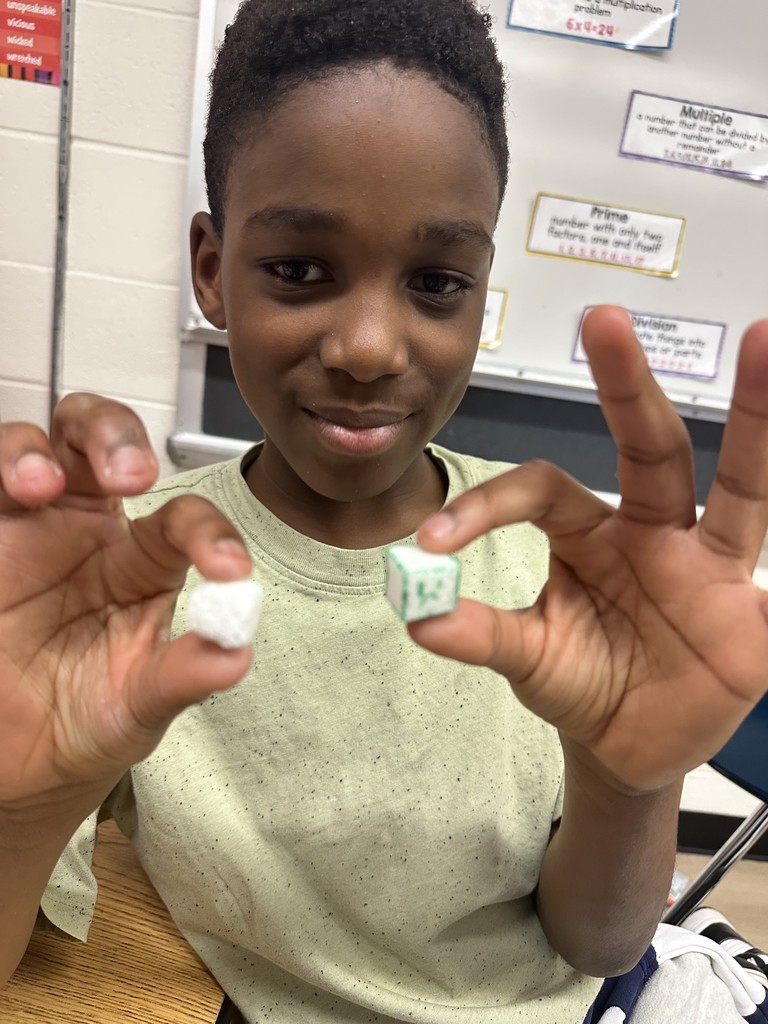
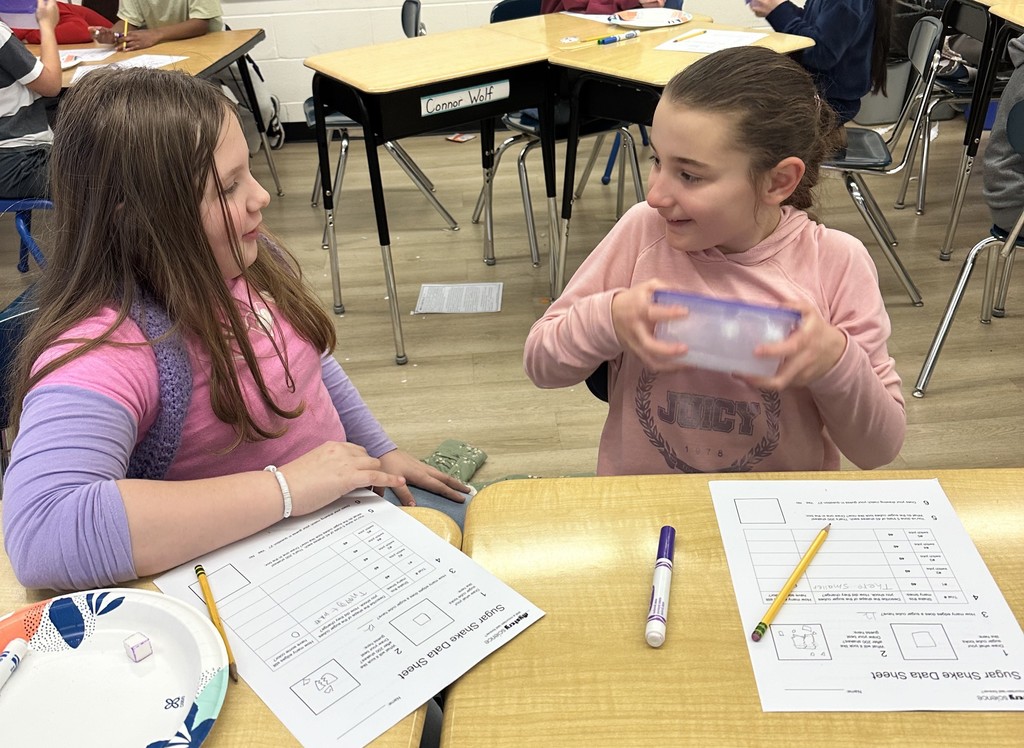

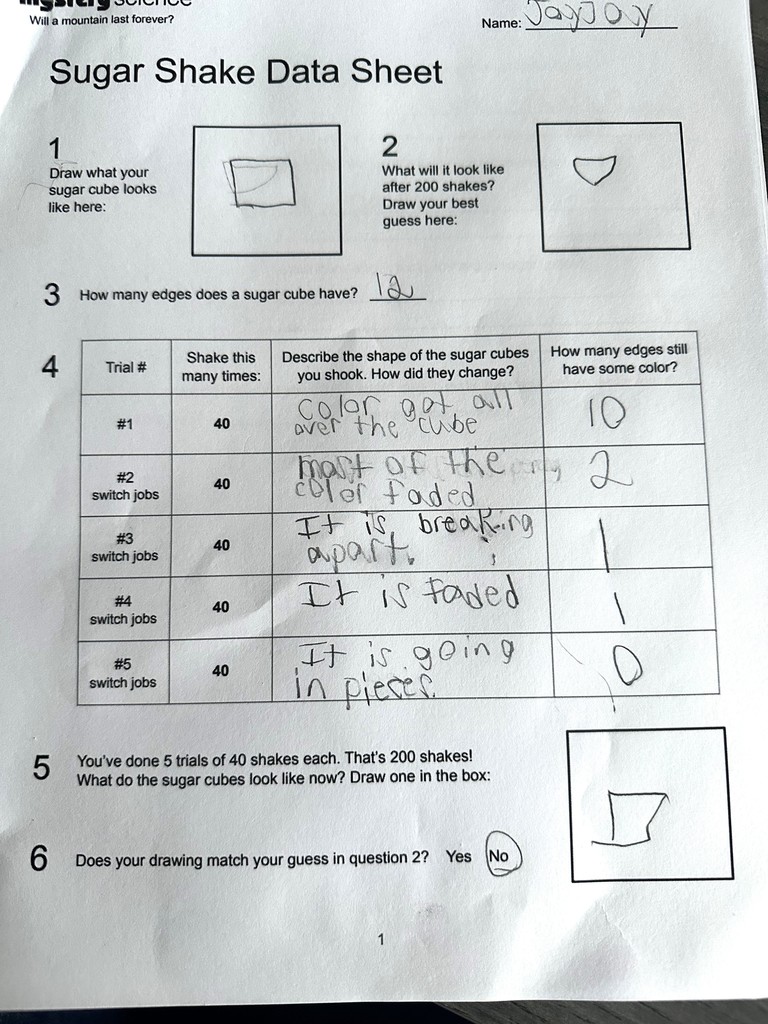

Joan Giardina’s IS fourth-grade art students are learning about self-portraits and the proportions of the face in class!
Students looked at how everyone's face has the same general proportions and that if one knows “the math” behind how the face is divided, drawings will be much more realistic. They looked at examples of faces with the proportions slightly off, had to figure out what was wrong and discussed how if one feature is put in the wrong place it affects everything else. Students are also learning how to use shading, instead of lines, to show the edges of facial features. This technique makes the drawings more realistic as well.
Learning about self-portraits and facial proportions is important in art class because it provides a foundational understanding of human anatomy, allowing students to accurately capture likeness in their drawings, develop observational skills by closely studying their own faces, and serves as a fundamental building block for creating realistic portraits of others, all while providing a personal connection to the artwork through self-expression.




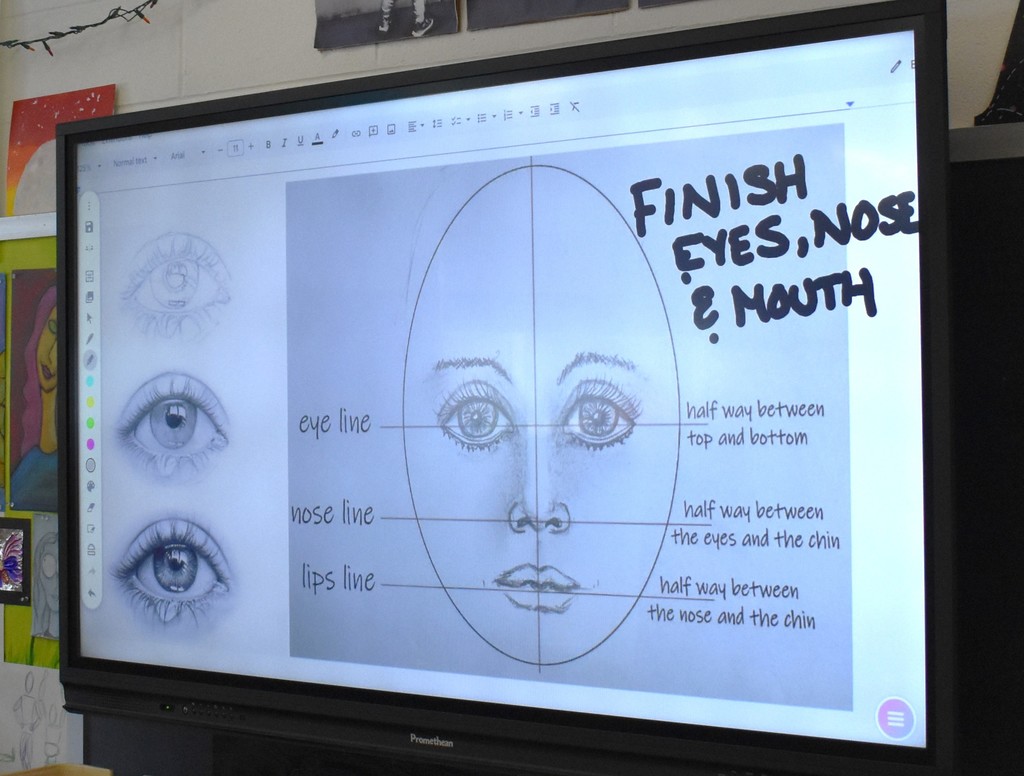
Like all district fourth-graders, Kim Marasco’s IS fourth-graders are spending time during math class perfecting their long division math skills. This is something that probably most of us remember how to do!
Learning long division is important because it teaches students a systematic way to divide larger numbers into smaller parts, which is a foundational math skill that builds upon basic multiplication facts and helps them tackle more complex division problems later on, especially when dealing with larger numbers and decimals. Long division also helps students to develop critical thinking and problem-solving skills through the structured steps involved in the process.

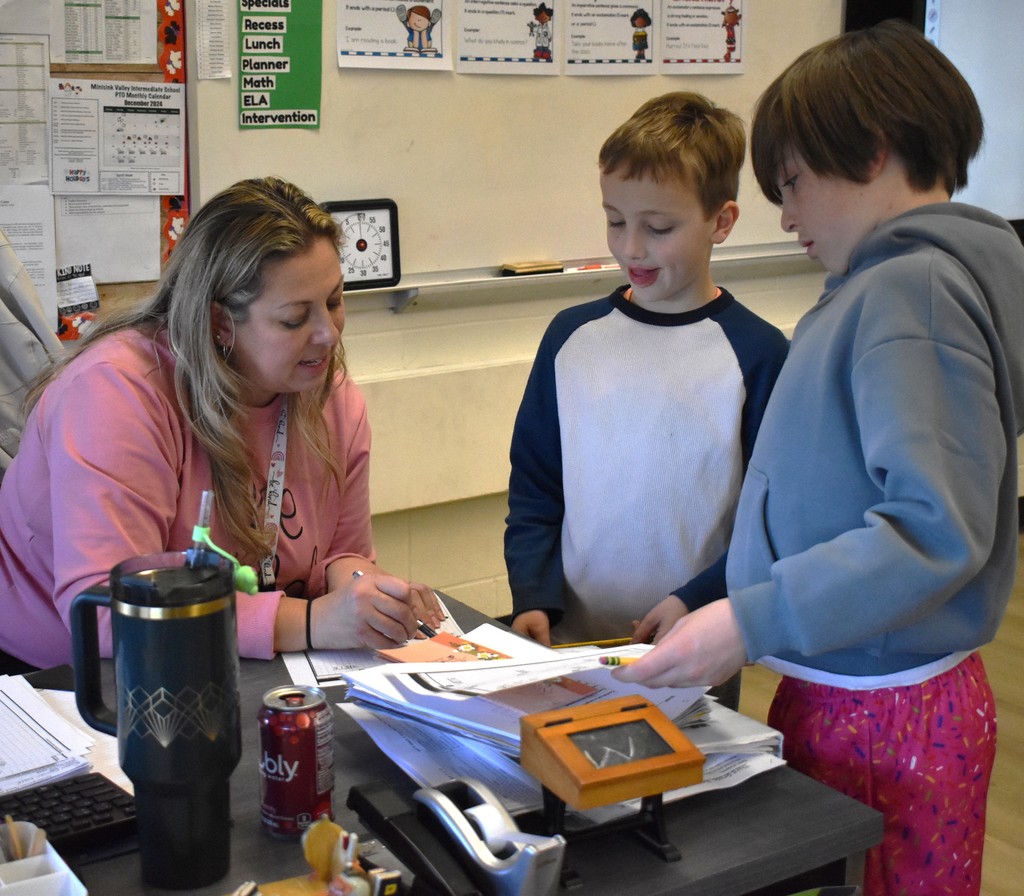


Ross Potter’s IS physical education third-graders are getting really good at playing floor hockey!
Floor hockey is a simplified version of ice hockey played indoors on a flat surface, where players use sticks to hit a plastic puck or ball into a goal, typically with modified rules to suit younger children's abilities and often played in a gym setting as part of physical education classes. Often, the main focus at this level is usually on basic skills like dribbling, passing, and shooting while learning the game's fundamental concepts like positions and scoring




Like all district third-graders, Shari Cannone’s IS third-graders are learning about the distributive property of multiplication during their math lessons.
The distributive property is important because it helps students break down complex multiplication problems into smaller, more manageable parts, allowing them to use basic multiplication facts to solve larger numbers, develop number sense, and build a foundation for more advanced math concepts as they advance to higher grade levels.. This property shows them how to "distribute" a multiplication operation across addition, making calculations easier.



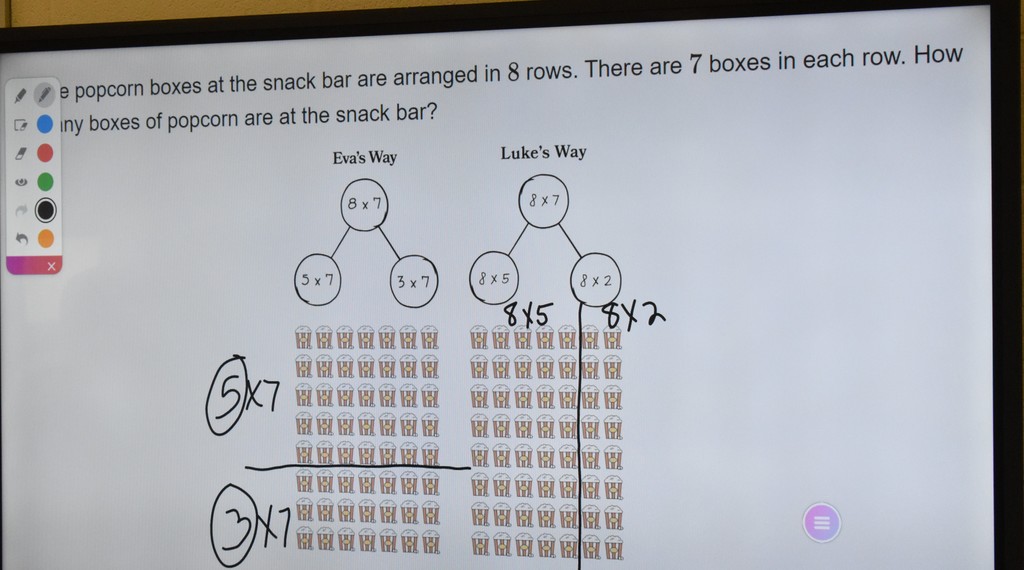
Create --- Sing ---Read
IS Art Teacher Joan Joan Giardina, Music Teacher Deanna Feuerbach and Librarian Aimee Hardy are happy to share these important key words they reinforce to their students every day

Jennifer Carroll’s IS fifth-graders, like other fifth-grade classes, continue to be involved in partner reading, using materials they’ve been discussing and studying in social studies.
Partner reading allows students to practice reading aloud in a low-pressure environment, build fluency, improve comprehension, develop vocabulary, and gain confidence by supporting each other while reading, while giving teachers an opportunity to monitor individual progress and provide targeted support.


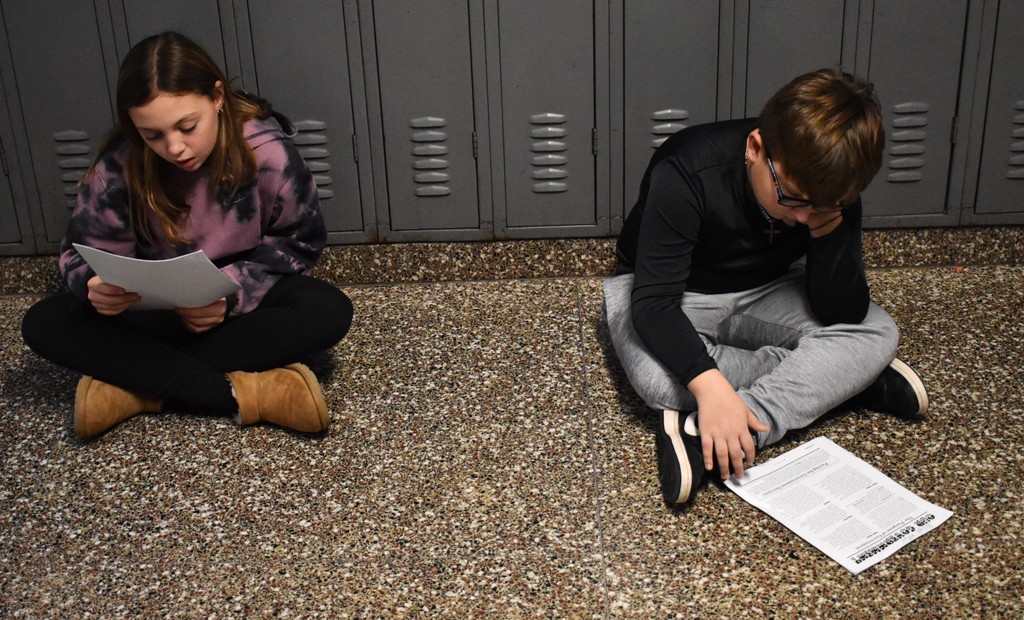

WATCH FOR THESE FANCY PANTS!
Joan Giardina’s IS art students recently submitted their best drawings which showed her the concepts they learned in art class, which included the concepts of detail, value, shading and more!
Winning drawings were chosen and those winning students continue to be in the process of adding their artwork to Mrs. Giardina’s JEANS, which she will proudly wear at the spring District Art Show (and beforehand as well!)
Students visited her art room during extra art time at the end of the day to work on the jeans. WHAT A COOL PROJECT!
But! This is just the beginning, as the contest was open to all students and there’s a wide range of winners in each grade. More drawings will continue to be added until the jeans are completely filled with wonderful art! What a wonderful example of wearable art! Wearable art is pushes the boundaries of creativity, offering the wearer an opportunity to embody art and make a personal statement.
Detail, value, and shading in art are crucial because they collectively create the illusion of depth, form, and realism in a piece by accurately depicting how light interacts with objects, allowing the viewer to perceive three-dimensional shapes and understand the spatial relationships within a scene. See more photos on the district's Facebook page:https://www.facebook.com/MinisinkValleyCSD






Jenn Kemmerer’s, Cheryl Wilson’s and Jessica Venettozzi's IS fourth-graders recently visited each other’s classrooms to see their outstandingly creative New York State Native American dioramas. Students displayed their work as their peers stopped by their desks to ask questions.
Students were tasked with designing and building either a longhouse or wigwam to show their specific understanding of Iroquois an Algonquian housing. As part of their project work, students were also tasked with writing about their home, who lived in t and other details. While this was a student-centered home project, families were encouraged to also take part!
Building a longhouse or wigwam is much more than just a creative project. This project helps students understand how Native American tribes adapted their housing to their environment and lifestyle, particularly the importance of communal living in a longhouse for large families and the flexibility of a wigwam for nomadic tribes who needed to move frequently depending on food sources. It teaches them about the practical reasons behind different types of shelters based on the needs of the people who built them.






The Intermediate School PTO "elves" have helped many students with their holiday shopping this year at the PTO Holiday Kidz Boutique! Shh....don't give away any surprises!








Presenting the winners of the annual Intermediate School Staff Bakeoff: Best Tasting: Shawona Ellison; Most Festive: Cecilia Kosowicz; Best Overall: Sheri Gurney; Best from Scratch: Jayna Plocharczyk; and Best Not a Cookie: Karen Nicholson!
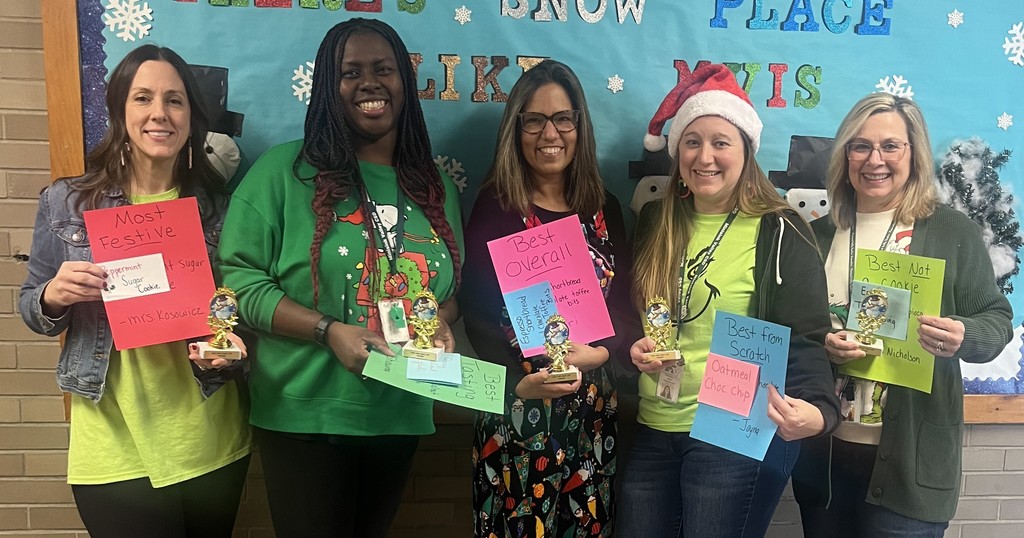

Do you remember how to solve word problems that involve multiplying fractions with mixed numbers?
Fifth-graders, like Michael Sirico’s IS fifth-graders, do! Ask them to give you a refresher!
Take a peek at Mr. Sirico’s students recently solving word problems that involved multiplying fractions with mixed numbers. They were taught to start by summarizing their word problems by writing down each number and labeling what was important about each.
Then they were shown how to recognize an "of problem." Later, students had to change mixed numbers into improper fractions to solve these problems, and were shown how to properly label their answers, including the unit involved with their answers.


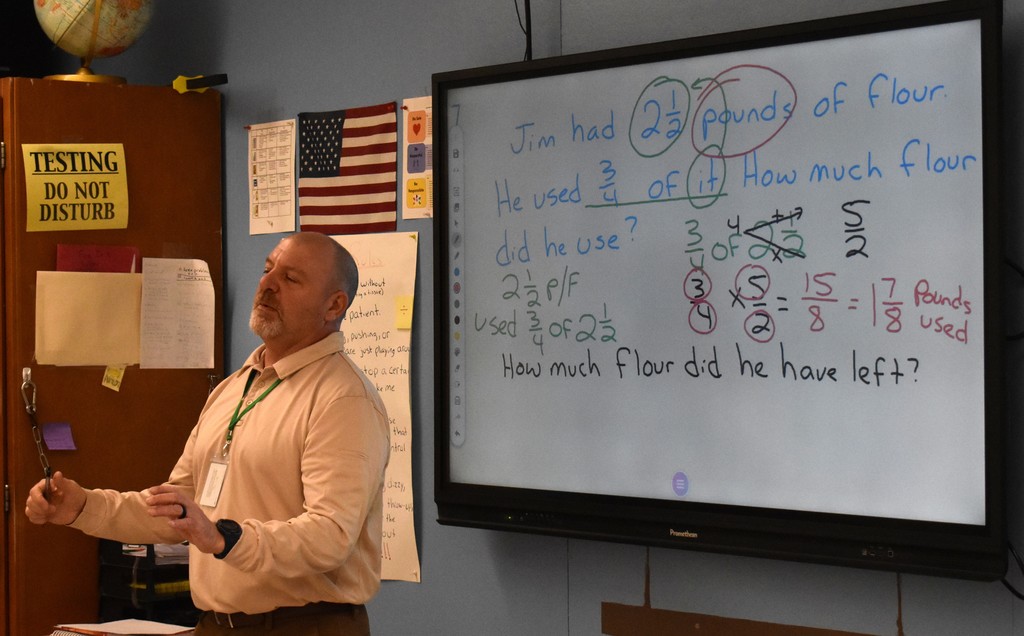
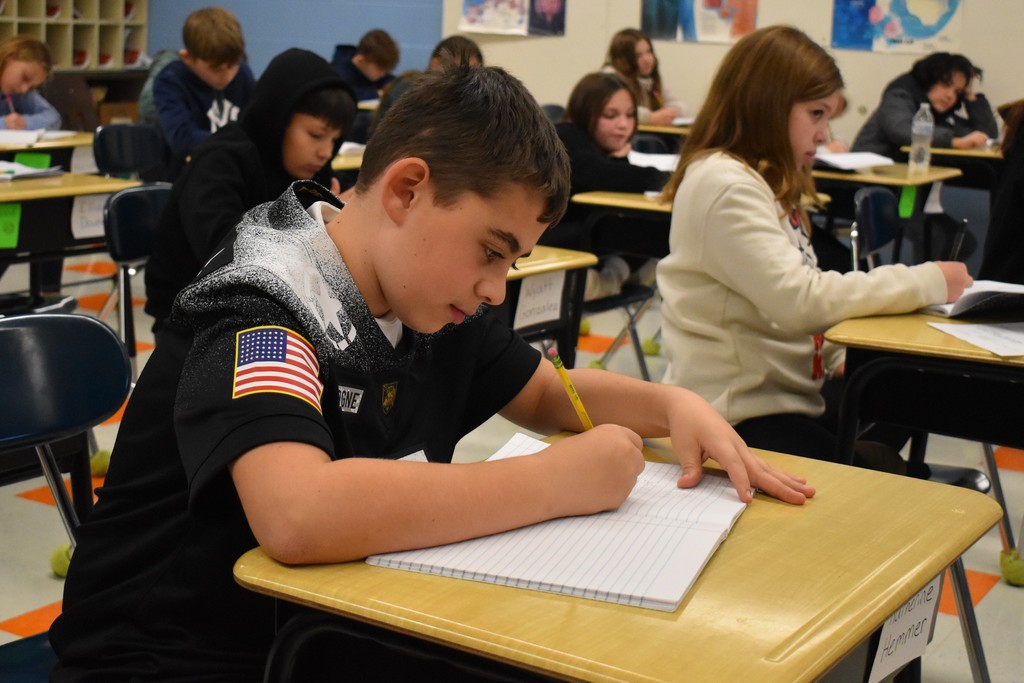

Deanna Feuerbach’s IS fourth-grade music students have been having a great time using boomwhackers in class, which includes using them for holiday song play-along videos!
Boomwhackers are percussion instruments that are lightweight, color-coded plastic tubes that are tuned to different musical pitches. They are tuned to a C Major scale.
Each student is given a different colored pitch, and must wait their turn to play their note when it appears on the screen. The students are able to perform together as an ensemble to create music which helps enhance social skills and work towards a common goal.
Boomwhackers are a popular instrument in elementary music classrooms because they’re a fun and engaging way to teach music concepts such as rhythm and pitch, harmony and melody as well as timing, focus and concentration, teamwork, collaboration and hand-eye coordination.
Craig Ramsell invented the instrument in 1994 while cutting down a cardboard gift-wrap tube for recycling. He noticed the different tones produced by the two pieces of the tube and realized he could tune them to play music. Ramsell experimented with different plastics, eventually settling on plastic mailing tubes. He and his wife created the first plastic model in 1995.
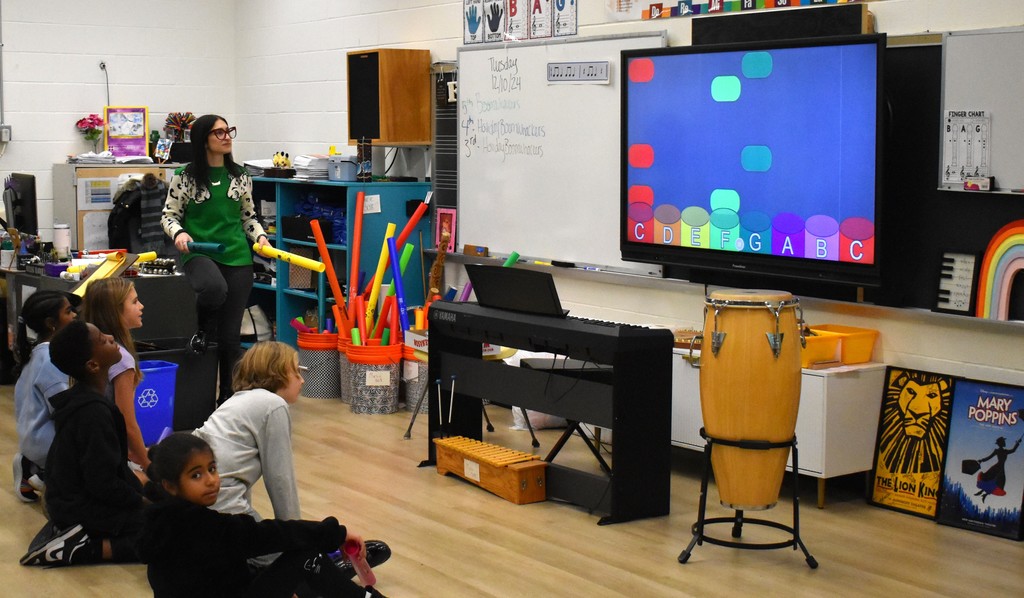
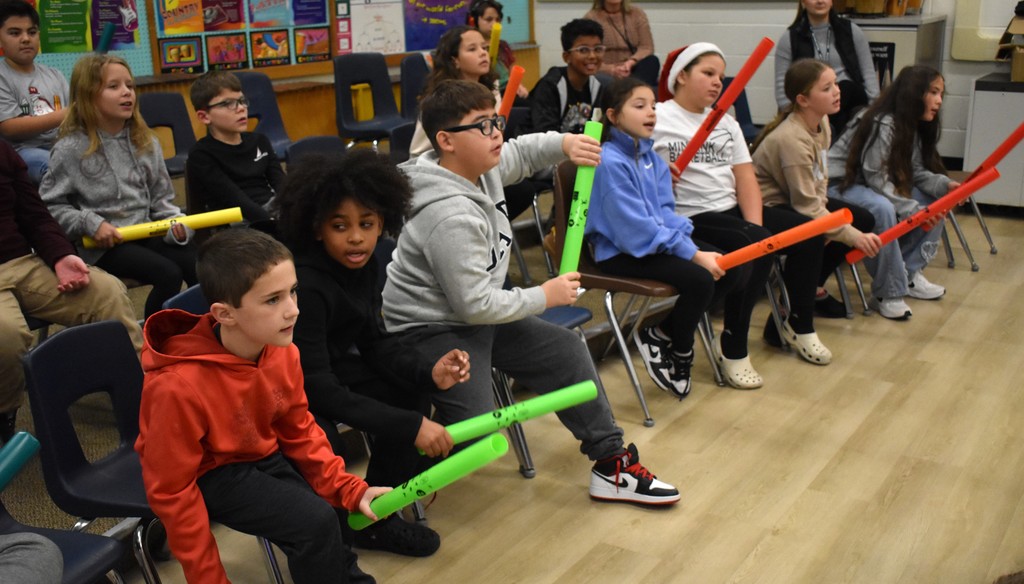
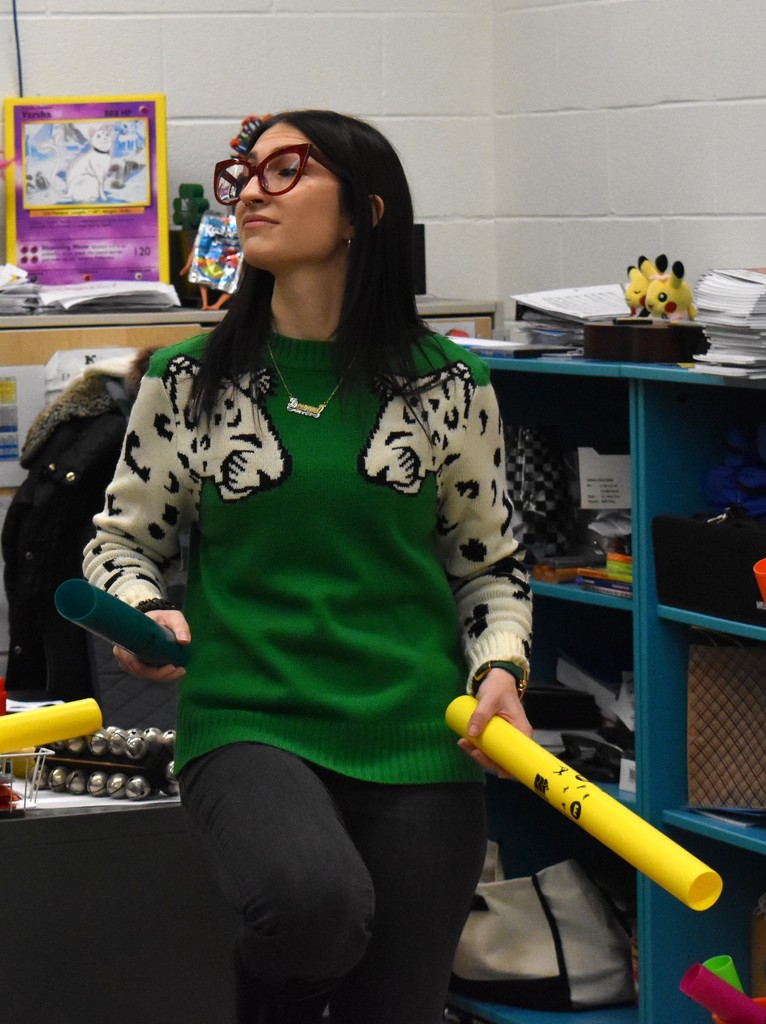
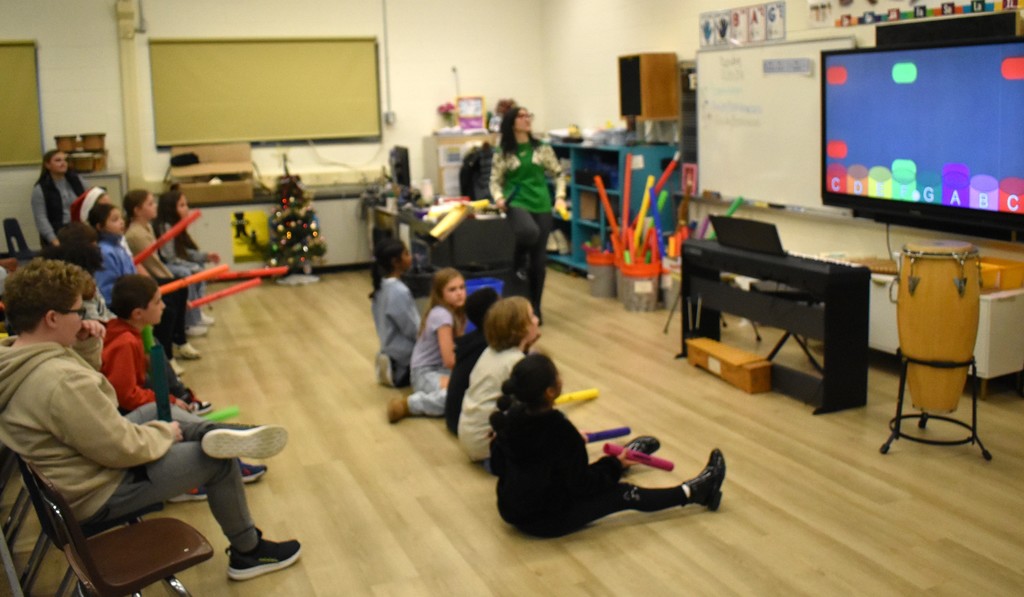
CAN YOU HELP? The High School's Youth Against Cancer Club is in the midst of a donation drive through Dec. 16 to collect items to brighten the days of Garnet Medical Center patients. See the flyer for what students are hopeful to collect! Your contributions would be most welcome!

CAN YOU HELP?
The High School cheerleaders' SOCK, HAT and GLOVE DRIVE runs through Dec. 20. Please see the details and thanks for sharing!

